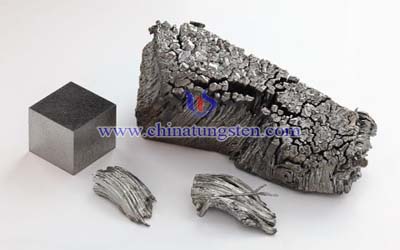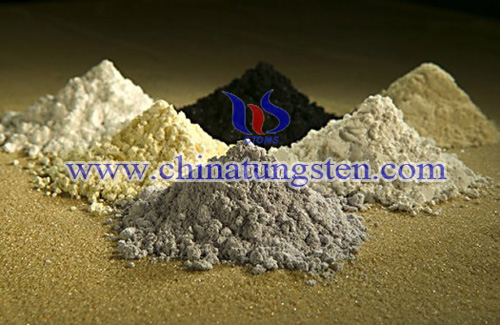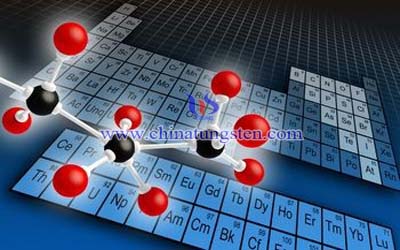Beneficiation Success Enhances Ngualla Rare Earth Project Economics
- Details
- Category: Rare Earth News
- Published on Friday, 08 March 2013 16:01
- Written by Yuri
- Hits: 2716
Peak Resources Limited reported further improvements to beneficiation processes for the Ngualla Rare Earth Project in Tanzania. The ability to concentrate mineralisation at an early stage prior to acid leach recovery will have a significant and positive impact on costs and support Peak’s target to be a low cost producer.
The optimisation of the beneficiation process effectively reduces the mass of feed to be treated by the acid leach recovery process by 43% compared to the scoping study assumptions. This will lead to significantly lower capital and operating costs for the operation.
The latest test work shows that conventional magnetic separation and flotation techniques reduce the mass of the feed mineralisation by 78% through the rejection of relatively unmineralised barite and iron oxides.
Reducing the amount of material processed at the acid leach recovery stage has a significant impact on operating costs by reducing sulphuric acid consumption – the major constituent of reagent costs. The scoping study completed in early December 2012 estimated that the acid plant and acid leach recovery circuit make up 53% of total operating costs.
The reduction in volume treated will also reduce capital costs as a smaller plant will be required for the same amount of product. The acid leach recovery circuit and the acid plant together constitute 27% of total project capital costs as estimated in the scoping study.
The beneficiation process increases the grade of the feed over 3 fold from 5.3% REO* to 16.9% REO for this composite sample.
The cost reductions will be quantified in a revision of the scoping study and economic assessment to be completed in Q2 2013. The revised study will also use a new optimised mine schedule based on the new Mineral Resource estimate and model that is on schedule for completion by the end of March 2013.
Peak Resources Managing Director Richard Beazley said “Ngualla continues to improve with each milestone. We are already in the lower quartile in terms of operating costs, and also have one of the lowest capital costs of any rare earth project. This new test work will allow us to reduce costs even further and supports our assertion that Ngualla is the most commercially attractive rare earth project around.”

Rare Earth Manufacturer & Supplier: Chinatungsten Online - http://www.chinatungsten.com
Tel.: 86 592 5129696; Fax: 86 592 5129797
Email: sales@chinatungsten.com
Tungsten News & Tungsten Prices, 3G Version: http://3g.chinatungsten.com
Tungsten News & Tungsten Prices, WML Version: http://m.chinatungsten.com
Cavan Ventures Granted Option for New Graphite and Rare Earth Mining Claims in Quebec
- Details
- Category: Rare Earth News
- Published on Friday, 08 March 2013 15:20
- Written by Yuri
- Hits: 2767
Cavan Ventures Inc. is pleased to announce that it has been granted an option to acquire four prospective new mining properties covering graphite occurrences and with a potential for rare earth elements.
The four properties are located in Quebec, Canada, and are all easily accessible by paved or gravel roads and close to infrastructures.
The Pierre Riche North and South claims are located at about 130 km southwest of Saguenay-Chicoutimi, and about 70 km north-northwest of La Tuque. The Trans Canadian railroad line used by the Canadian National Railroad passes just 45 km south of the claim groups.
Pierre Riche North comprises 31 map-staked claims covering 1,705 hectares (4,213 acres). The property covers granitic gneiss, anorthosite, calcsilicate rocks, paragneiss and metasediment. Mafic gneisses contain disseminated sulphides and pockets of pyrite and graphite. Historically, the graphite flakes were mistaken for molybdenite. Anomalous values of copper, nickel, zinc, vanadium and manganese were obtained from a 0.80 m long channel sample.
Pierre Riche South comprises 11 map staked claims covering 605 hectares (1,495 acres), with the same lithologies as on the North claims. Anomalous values in copper, nickel, manganese, strontium and barium were obtained from one-meter long channel samples. This property presents an excellent potential for graphite in flakes and rare earth elements in pegmatite and mafic gneiss.
Two additional mining properties are located in the Upper Gatineau River region in the western part of Quebec, and about 70 km south of the Company’s Pythonga Lake Rare Earth Element project.
The Cawood and Saint-Marie properties are located at about 65 km north of Ottawa, and accessible by paved roads. Infrastructure in this region is excellent for a mining operation. Cawood comprises 10 map staked claims covering an area of 550 hectares (136 acres). This property has potential for graphite, mica, apatite and rare earth elements. It is located in the Maniwaki Metasedimentary Basin, well known for its graphite deposits and base metal occurrences (Pb-Zn) associated to calcitic and dolomitic marbles. In the past, numerous small graphite occurrences were mined by open-pits which are still accessible.
The Sainte-Marie property comprises 11 map staked claims covering an area of 605 hectares (1,495 acres). Several graphite occurrences exist on the property and there is also potential for rare earth elements. Six graphite occurrences were studied during a mapping program. Most have returned values higher than 3% graphite in quartz-feldspar gneisses of the H Unit. One occurrence returned 25% graphite over one meter in a shear zone.
The four mining properties were acquired from three well-renowned prospectors. CAVAN can earn a 70% interest in the four mining properties by issuing the optionors a total of 1,500,000 shares over a period of two years and making two cash payments totalling $35,000 of which $15,000 is payable upon signing. The Company must spend a minimum of $60,000.00 during the first year of the agreement. Claims are subject to a 2% net smelter return of which the Company may buy back 1% for the sum of $1,500,000 and has the first right of refusal to purchase the balance of the royalty as well as the remaining 30% interest. The acquisition of the claims is subject to acceptance by the TSX Venture Exchange.
Rare Earth Manufacturer & Supplier: Chinatungsten Online - http://www.chinatungsten.com
Tel.: 86 592 5129696; Fax: 86 592 5129797
Email: sales@chinatungsten.com
Tungsten News & Tungsten Prices, 3G Version: http://3g.chinatungsten.com
Tungsten News & Tungsten Prices, WML Version: http://m.chinatungsten.com
Why Are Rare Earths Considered More Valuable?
- Details
- Category: Rare Earth News
- Published on Friday, 08 March 2013 14:49
- Written by Yuri
- Hits: 2569
In the last 20 years, the importance of rare earth elements has skyrocketed due to three main factore:
High demand: An increasing global demand for new products and emerging technologies that use rare earth elements(REE).
Uncertain supply: China, the world's largest source of rare earth materials at the present time, has begun to reduce quotas on its REE exports, combat smuggling and also close some of its major mines. Currently, China provides over 90 percent of the world's total output of rare earths.
No substitutions: The unique electronic, optical and magnetic characteristics of these elements cannot be matched by any other metals or synthetic substitutes.
Combined, these three factors have raised a growing level of concern that other rare earth mining sites need to be found outside of China, explored and brought online in short order.
There are 17 classified rare earth elements and prices vary widely with heavy rare earths historically commanding significantly higher prices than light rare earths. Several of these elements can fetch extremely high prices depending on their scarcity and commercial applications. Europium, terbium and dysprosium have been recently priced in the range of $1,400 - $3,500/kg. HREE prices are likely to remain significantly higher than recent historical levels, given the fact that few new sources of supply for these materials will be available before 2015.
Less expensive rare earths like lanthanum and cerium (the prices of which currently hover around US $20-30/kg) are extensively used in modern technology, such as the manufacturing of catalytic converters that automobiles require.
Many of the high tech devices enjoyed by the western world need rare earths to work. Consumer smartphones, TVs, batteries, computers, medical equipment, even some of the critical components in nuclear reactors depend on rare earth elements for their operation.
This widespread need for REE in global manufacturing ensures a constant commercial hunger for these metals for the foreseeable future. While prices have been dropping since peaking in July 2011, they still remain well above historical levels.

Rare Earth Manufacturer & Supplier: Chinatungsten Online - http://www.chinatungsten.com
Tel.: 86 592 5129696; Fax: 86 592 5129797
Email: sales@chinatungsten.com
Tungsten News & Tungsten Prices, 3G Version: http://3g.chinatungsten.com
Tungsten News & Tungsten Prices, WML Version: http://m.chinatungsten.com
Illegal Extraction of Rare Earth Harms Environment
- Details
- Category: Rare Earth News
- Published on Friday, 08 March 2013 14:57
- Hits: 2689
Why do some people take a risk to extract rare earth illegally? And what impacts will illegal extraction bring to the environment and residents nearby?
This area began rare earth extraction since some time between May and June last year, according to people living in the neighbor. The illegal work site cover an area of 4 to 5 acres,there are physic permeating separation pool and reaction pool, where fills with acid liquids like oxalic acid, semi-finished product of extracted rare earth was put nearby. Exhausted gas and liquid generated by chemical reaction are actually been discharged directly, red liquid can be detected everywhere is some cannels in lower reaches. Residents complain that vegetables have been polluted.

It is said that, the extraction of rare earth is rather complex, besides, the content of rare earth is quite small in raw ores. Even though, rare earth is a kind of material that is of strategic importance to a country, in addition the price of rare earth is very high, that is why many people will take risk to extract rare earth secretly. But the extract consumes a large number of water. To make it easier to get water and exhaust waste water, work sites are usually located near water source or reservoir.
Dr. Wen of Applied Chemistry Department , Shenzhen University said that waste water exhausted after the extraction of rare earth contains acid and waste residue which are toxic and could be harmful to peripheral environment.
Tungsten Manufacturer & Supplier: Chinatungsten Online - http://www.chinatungsten.com
Tel.: 86 592 5129696; Fax: 86 592 5129797
Email: sales@chinatungsten.com
Tungsten News & Tungsten Prices, 3G Version: http://3g.chinatungsten.com
Tungsten News & Tungsten Prices, WML Version: http://m.chinatungsten.com
How Are Rare Earths Used?
- Details
- Category: Rare Earth News
- Published on Friday, 08 March 2013 14:31
- Written by Yuri
- Hits: 2648
There are 17 elements found on the earth that are classified as rare earth elements (REE). While the word "rare” may make you think that these elements are scarce, they are in fact found all over our planet but typically in small amounts. The term "rare earth” comes from their initial discovery in which only tiny portions of these minerals could be isolated from larger quantities of still more common elements.
Today, "rare earth” is used to describe any of the 15 metallic chemical elements with atomic numbers from 57 to 71 (called "lanthanides”) and the chemically similar elements scandium and yttrium.
The global demand for rare earths has increased as more uses for these elements are found. Today there are hundreds of uses for REE, ranging from high tech (lasers, camera lenses, computer memory modules, x-ray machines), energy (batteries, lamps, superconductors) and industrial (aerospace, caustic cleaning agents, specialized glass) applications.
A List of All Rare Earth Elements
|
Z |
Element |
Symbol |
Use |
|
21 |
Scandium |
Sc |
Aerospace framework, high-intensity street lamps, high performance equipment |
|
39 |
Yttrium |
Y |
TV sets, cancer treatment drugs, enhances strength of alloys |
|
57 |
Lanthanum |
La |
Camera lenses, battery-electrodes, hydrogen storage |
|
58 |
Cerium |
Ce |
Catalytic converters, colored glass, steel production |
|
59 |
Praseodymium |
Pr |
Super-strong magnets, welding goggles, lasers |
|
60 |
Neodymium |
Nd |
Extremely strong permanent magnets, microphones, electric motors of hybrid automobiles, laser |
|
61 |
Promethium |
Pm |
Not usually found in Nature |
|
62 |
Samarium |
Sm |
Cancer treatment, nuclear reactor control rods, X-ray lasers |
|
63 |
Europium |
Eu |
Color TV screens, fluorescent glass, genetic screening tests |
|
64 |
Gadolinium |
Gd |
Shielding in nuclear reactors, nuclear marine propulsion, increases durability of alloys |
|
65 |
Terbium |
Tb |
TV sets, fuel cells, sonar systems |
|
66 |
Dysprosium |
Dy |
Commercial lighting, hard disk devices, transducers |
|
67 |
Holmium |
Ho |
Lasers, glass coloring, High-strength magnets |
|
68 |
Erbium |
Er |
Glass colorant, signal amplification for fiber optic cables, metallurgical uses |
|
69 |
Thulium |
Tm |
High efficiency lasers, portable x-ray machines, high temperature superconductor |
|
70 |
Ytterbium |
Yb |
Improves stainless steel, lasers, ground monitoring devices |
|
71 |
Lutetium |
Lu |
Refining petroleum, LED light bulbs, integrated circuit manufacturing |
(Remark: Z = Atomic Number)
Elements 29, 61 = Rare Earths
Elements 57 – 60, 62 = Light Rare Earth Elements
Elements 39, 63 – 71 = Heavy Rare Earth Elements
Rare earths elements are also being used for a growing number of applications. At the forefront of this wave of discovery are new technologies being developed for computer science uses, industrial engineering, renewable energy sciences and military applications.
Here are a few examples of how rare earth elements are being utilized in the world today:
Electronics:
Television screens, computers, cell phones, silicon chips, monitor displays, long-life rechargeable batteries, camera lenses, light emitting diodes (LEDs), compact fluorescent lamps (CFLs), baggage scanners, marine propulsion systems.
Manufacturing:
High strength magnets, metal alloys, stress gauges, ceramic pigments, colorants in glassware, chemical oxidizing agent, polishing powders, plastics creation, as additives for strengthening other metals, automotive catalytic converters.
Medical Science:
Portable x-ray machines, x-ray tubes, magnetic resonance imagery (MRI) contrast agents, nuclear medicine imaging, cancer treatment applications, and for genetic screening tests, medical and dental lasers.
Technology:
Lasers, optical glass, fiber optics, masers, radar detection devices, nuclear fuel rods, mercury-vapor lamps, highly reflective glass, computer memory, nuclear batteries, high temperature superconductors.
Renewable Energy:
Hybrid automobiles, wind turbines, next generation rechargeable batteries, biofuel catalysts.
Other interesting facts about uses for rare earths:
The rare earth element europium is being used as a way to identify legitimate bills for the Euro bill supply and to dissuade counterfeiting.
An estimated 1 kg of rare earth elements can be found inside a typical hybrid automobile.
Holmium has the highest magnetic strength of any element and is used to create extremely powerful magnets. This application can reduce the weight of many motors.

Rare Earth Manufacturer & Supplier: Chinatungsten Online - http://www.chinatungsten.com
Tel.: 86 592 5129696; Fax: 86 592 5129797
Email: sales@chinatungsten.com
Tungsten News & Tungsten Prices, 3G Version: http://3g.chinatungsten.com
Tungsten News & Tungsten Prices, WML Version: http://m.chinatungsten.com





 sales@chinatungsten.com
sales@chinatungsten.com